April 3, 2017 report
Researchers capture dinoflagellate on video shooting harpoons at prey
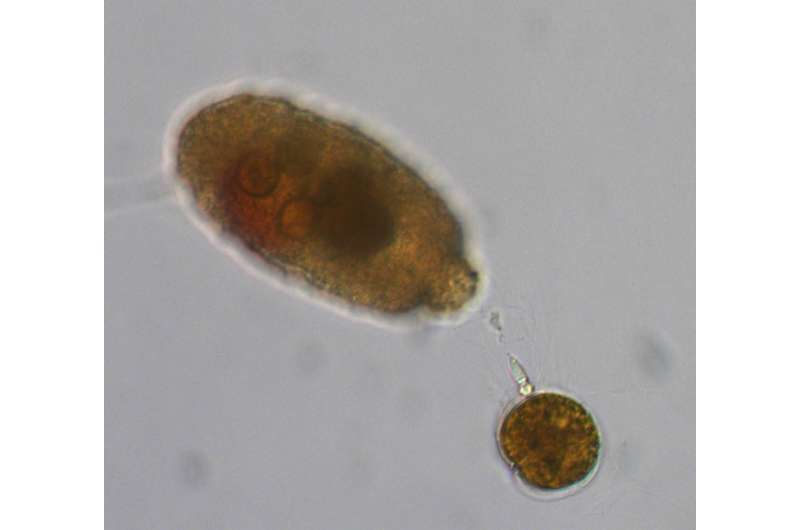
(Phys.org)—An international team of researchers has filmed for the first time a type of single-cell organism, a dinoflagellate, shooting its harpoon-like organelle at prey as a means of capture. In their paper published in the journal Science Advances, the team describes how they managed to capture the tiny creatures in action and what they learned by watching them engage with prey.
Dinoflagellate—tiny, single-cell sea creatures that serve as food for larger organisms—are more complex than thought, the researchers have discovered. Prior research has shown that one type, called polykrikos kofoidii, has an organelle that functions as a dart with a tow line that it shoots at prey to capture and retrieve it. In this new effort, the researchers found a way to capture the tiny creature while using its weapon. They also took apart the tiny harpoon to get a close-up look at it under a microscope. They found a three-ring structure that appeared to serve as a nozzle for ejecting the harpoon; the researchers wanted to learn more about how it works and whether it suggests that such creatures might be distant relatives of cnidarians which include such creatures as jellyfish and corals.
In looking at the organelle, the researchers found that it actually had three parts: a dart, which is the part fired at prey; a nematocyst, which is a larger dart and has a tube attached to it that functions like a hypodermic needle, injecting an unknown substance into the prey. The other part was a tow line that the polykrikos kofoidii used to retrieve prey once harpooned.
The team also did DNA studies on the creatures to learn more about their relationship to other sea organisms. They found little relationship between them and cnidarians, which suggests the similarity in design between harpoons is purely coincidental.
The researchers also found that another dinoflagellate, neatodinium, had a weapon the team described as rather like a Gatling gun—it shoots multiple rounds of nematocysts.
The team notes that despite different types of weaponry, the nozzle-like structures were similar between the two types of dinoflagellates, tying together such different systems in creatures that are supposed to be from the same lineage.
-
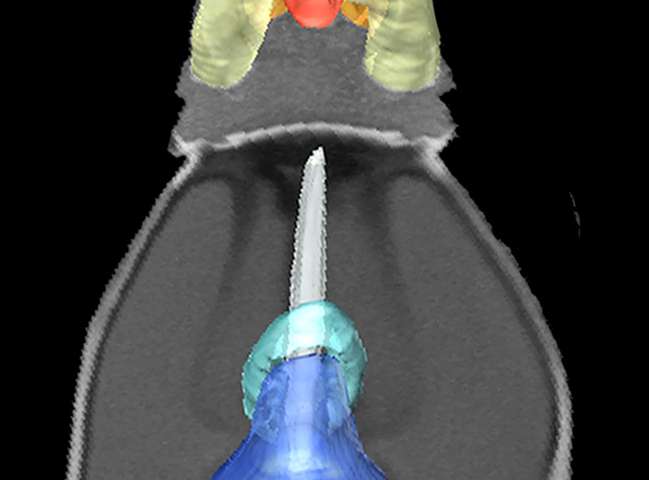
Scanning electron microgram of a P. kofoidii cell. Credit: Greg Gavelis -
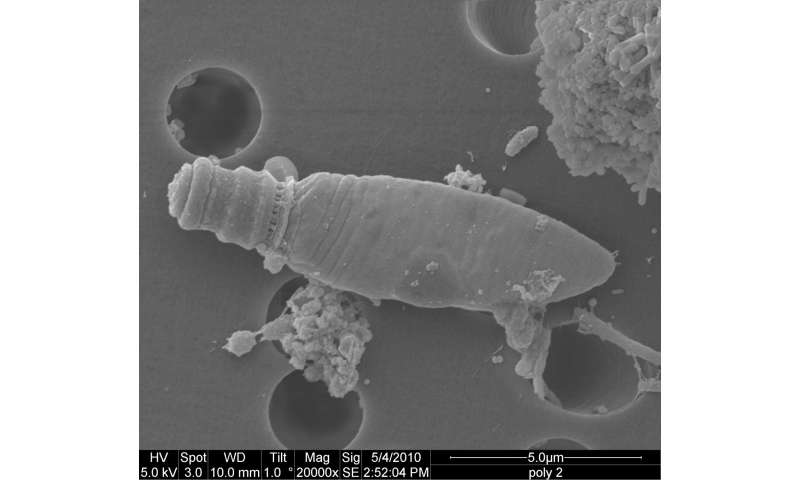
A Polykrikos cell after firing a nematocyst. Credit: Dr. Urban Tillmann
-
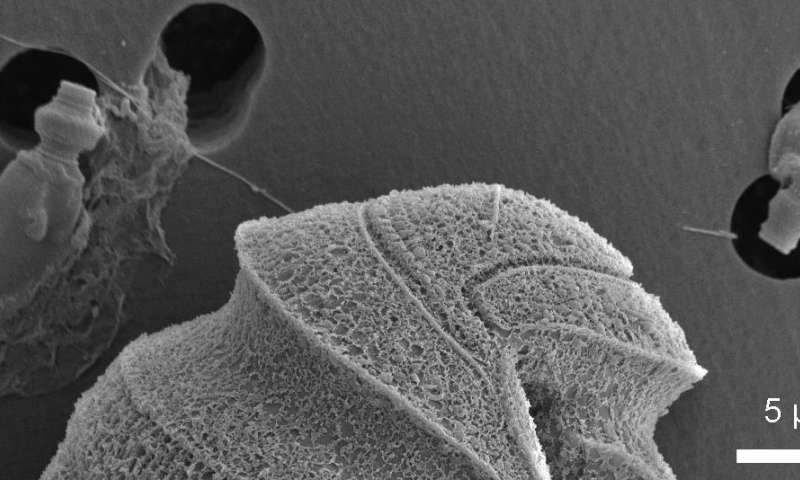
Close-up of Polykrilos kofoidii. Credit: Urban Tillmann. -
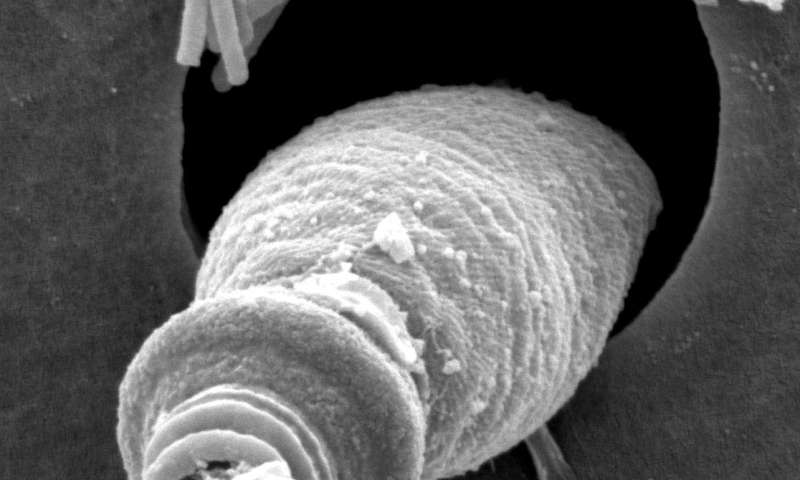
A close-up of Polykrilos kofoidii. Credit: Urban Tillmann.
More information:
Microbial arms race: Ballistic "nematocysts" in dinoflagellates represent a new extreme in organelle complexity Science Advances 31 Mar 2017:
Vol. 3, no. 3, e1602552, DOI: 10.1126/sciadv.1602552 , advances.sciencemag.org/content/3/3/e1602552
Abstract
We examine the origin of harpoon-like secretory organelles (nematocysts) in dinoflagellate protists. These ballistic organelles have been hypothesized to be homologous to similarly complex structures in animals (cnidarians); but we show, using structural, functional, and phylogenomic data, that nematocysts evolved independently in both lineages. We also recorded the first high-resolution videos of nematocyst discharge in dinoflagellates. Unexpectedly, our data suggest that different types of dinoflagellate nematocysts use two fundamentally different types of ballistic mechanisms: one type relies on a single pressurized capsule for propulsion, whereas the other type launches 11 to 15 projectiles from an arrangement similar to a Gatling gun. Despite their radical structural differences, these nematocysts share a single origin within dinoflagellates and both potentially use a contraction-based mechanism to generate ballistic force. The diversity of traits in dinoflagellate nematocysts demonstrates a stepwise route by which simple secretory structures diversified to yield elaborate subcellular weaponry.
Journal information: Science Advances
© 2017 Phys.org


















